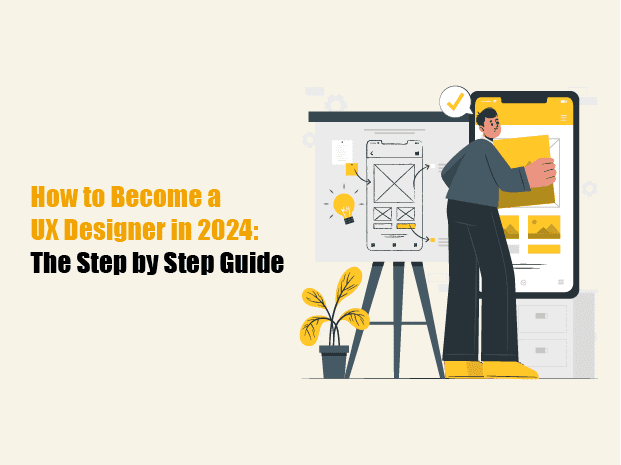If we address today’s fast-growing digital era, the need for user experience plays a important role so do the user experience UX/UI designers. In the year 2024, the need for individuals competent in devising effortless and satisfying user interchanges remains paramount.
The total in-app spending has surpassed a new high of $67.5 billion. Eventually, the need for competent UX/UI designers rose, indicating the necessity for specialists in this field. This blog is a brief guide that will describe the important stages and skills required as a UX designer.
What is a UX/UI Designer?
In the existing era of technology, the significance of UX designers cannot be embellished. These professionals are liable for formulating digital interfaces that fascinate and satisfy users. Their role expands far beyond mere visual aesthetics; it contains a profound knowledge of user behavior, adept problem-solving talents, and the capacity to develop memorable interactions. The primary responsibility of a UX designer is to create interfaces that not only exude visual appeal but also conduct efficiently and leave a lasting imprint on users.
How to Become a UX/UI Designer?
Before diving into the key steps, it’s important to understand that a victorious designer is a mixture of education, practical experience, and a strong professional portfolio.
1.Educational Background
Begin by establishing a strong educational foundation. While not always mandatory, pursuing a degree or relevant courses in UX design, graphic design, or a related field can provide you with essential theoretical knowledge.
2.Build a Strong Portfolio
A robust portfolio is your virtual showcase. It should reflect your versatility and ability to deal with diverse structure challenges. Contain a variety of assignments that illustrate your problem-solving talents.
3.Gain Practical Experience
Theory meets reality in the world of UX design. Engage in internships and freelance projects or contribute to open-source initiatives. Practical experience not only improves your knacks but also benefits you in developing a network within the corporation.
What Skills Do You Require to Become a UI Designer?
80% of people are willing to pay more for a better user experience. User onboarding tools can enhance user experience. 70% of business leaders consider UX and CX as competitive advantages. Before delving into the usefulness, let’s explore the key aptitudes that set extraordinary UI designers apart.
1.Soft Skills, Like Empathy
Best UI design is about understanding and connecting with users on an emotional level. Empathy allows you to design interfaces that resonate with the target audience.
2.User Research
The foundation of tremendous design lies in the knowledge of your users. Through detailed user analysis, you gain insights into their behaviors, preferences, and pain points.
3.Information Architecture
Before building visually appealing designs, prioritize structuring and organizing data in a way that enriches user understanding and navigation.
4.Interactive Design
Design interfaces that go beyond aesthetics should stimulate smooth and intuitive interactions for users.
5.Prototyping
Prototyping authorizes you to imagine and examine design concepts before full enactment. It’s an important step in purifying your designs.
6.Collaboration
UX design is a coordinated endeavor. Work closely with innovators, product executives, and other stakeholders to ensure your designs align with the overall concept and functionality.
7.Analytical Thinking
Analyze data and user feedback to continuously refine and optimize your designs. A data-driven approach ensures your designs evolve with user needs.
8.Problem-Solving
Approach design challenges with creativity and an innovative mindset. Problem-solving is at the heart of best UI design.
What Does a UI/UX Designer Do?
Now that we’ve analyzed the foundational skills let’s dip into the day-to-day duties of a UI/UX architect.
- Conducting User Research: To understand user needs and preferences.
- Creating Wireframes and Prototypes: Visualizing and testing design concepts before implementation.
- Collaborating with Developers: Ensuring seamless design implementation.
- Usability Testing: Gathering user feedback for iterative improvements.
Conclusion
In this journey towards becoming a UX designer in 2024, consider the influential role of MIT ID and UX design colleges in Pune. A fictional institution in this context, MIT ID represents an ideal environment that nurtures creative minds and provides a platform for aspiring designers.
Learn the offerings of esteemed institutions for b.des UX college in Pune, such as MIT ID, to undertake a profitable path in the ever-evolving domain of UX design. Keep in the sense that your voyage as a UX designer outweighs the mere growth of interfaces; it’s about curating encounters that resonate with users and linger in their minds.
